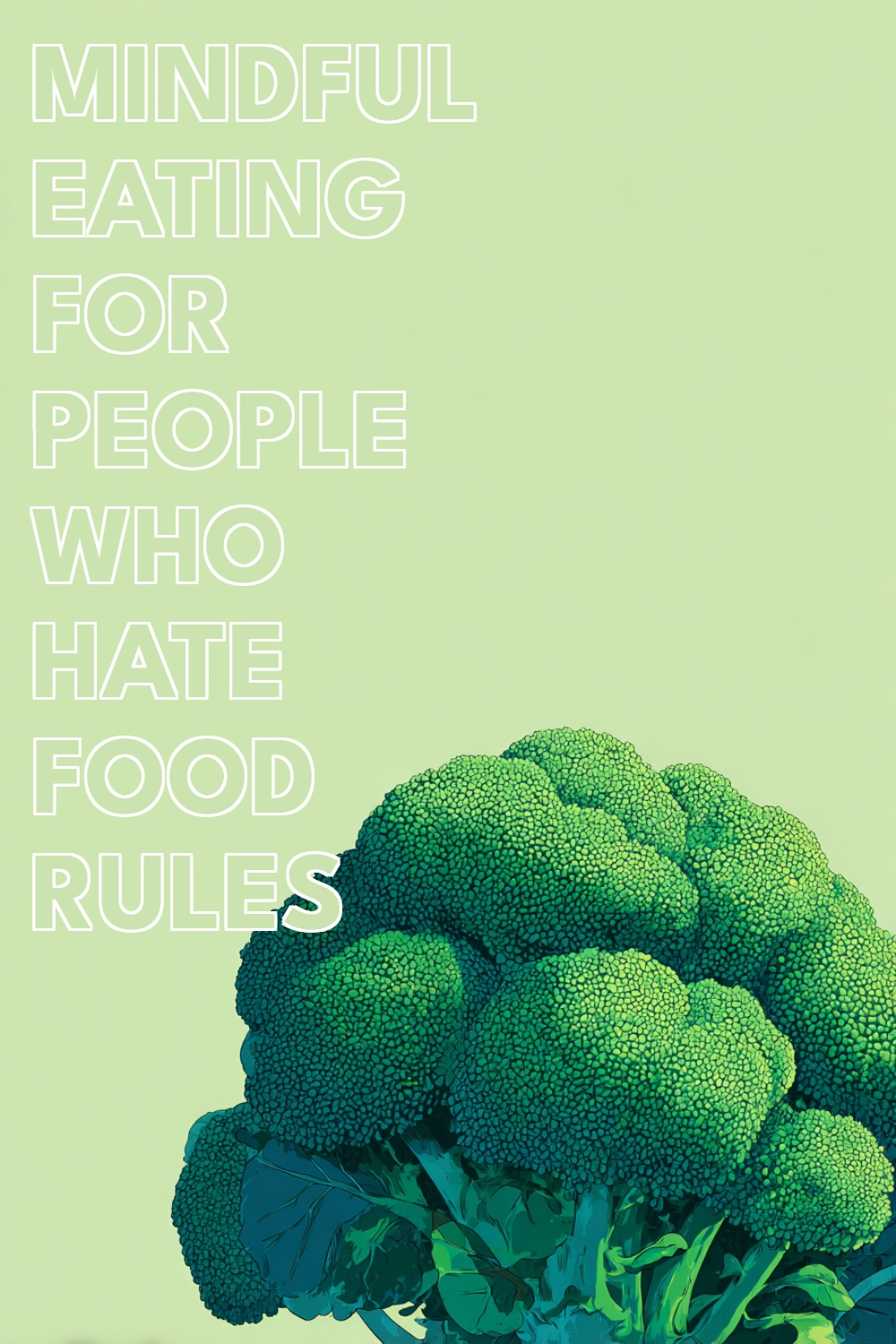Some people love structure. They like plans, checklists, and routines that tell them what to do and when to do it.
If that’s not you, this whole healthy eating thing can feel a bit overwhelming.
Most advice out there is full of schedules and rules. Eat every three hours. Don’t eat after 7 p.m. Chew 20 times. Track this. Measure that.
It’s too much.
And if your brain shuts down the minute something feels rigid, you might think mindful eating just isn’t for you.
But here’s the truth:
Mindful eating doesn’t need to be structured. It doesn’t need to be done a certain way.
You don’t have to follow a bunch of steps. You don’t even have to do it the same way every time.
What Mindful Eating Really Is
Let’s strip it down to the basics.
Mindful eating is about paying attention to your eating habits.
Noticing when you’re hungry. Tuning in while you eat. Checking in with how full you are. That’s it.
You’re not following a diet. You’re not tracking macros. You’re not trying to hit a perfect goal.
You’re just becoming more aware of how you eat and how food makes you feel.

Why Mindful Eating Works for Rule-Resistant People
If you hate rules, here’s the good news:
Mindful eating is flexible.
You can do it any time, in any way that works for you. There’s no right or wrong version. You don’t have to do it perfectly or every single meal.
It’s not all-or-nothing.
Even small moments of awareness add up.
You Don’t Need a Routine to Eat Mindfully
Some people find comfort in routines. Others feel boxed in by them.
If you’re someone who craves flexibility, mindful eating can work because it’s not structured.
You don’t need to schedule it. You don’t need to follow a plan. You just use the tools when it feels helpful.
And skip them when it doesn’t.
Here’s What It Can Look Like
Mindful eating doesn’t need to take long or look impressive.
It can be as simple as:
- Pausing before a snack and asking, “What do I actually feel like right now?”
- Eating one bite without your phone or TV for a few seconds.
- Noticing halfway through a meal whether you’re still enjoying it.
- Stopping when you feel “enough” instead of automatically cleaning your plate.
These aren’t rules. These are options.
Pick the ones that feel doable. Leave the rest.
There’s No Scorecard
You don’t get extra credit for doing it a certain number of times.
If you try one thing at one meal, that counts. If you forget the next five meals, that’s fine.
No need to track or record anything. No need to aim for perfect consistency.
You’re not trying to perform mindfulness. You’re just learning to notice what’s going on when you eat.
That’s it.
Forget the “Right” Way
A lot of people think mindful eating means eating slowly in silence with no distractions.
Sure, that might be ideal in theory.
But if you’re eating in the car, at your desk, or with kids running around, that doesn’t mean you’ve failed.
You can still pause. You can still check in. You can still make one conscious choice.
That’s mindfulness.
It doesn’t have to be peaceful. It just has to be present.
Use Your Personality as a Strength
If routines don’t work for you, don’t fight that. Use it.
People who dislike structure often have strong instincts. You’re more in tune with what feels right in the moment.
Mindful eating builds on that.
It’s not about control. It’s about connection. You’re reconnecting with your own signals instead of outsourcing your eating to plans and rules.
You don’t need to follow a program. You need to pay attention to yourself.
If You Do Nothing Else, Try This
Here are a few simple practices you can try, no structure required:
- Before eating: Ask, “Am I actually hungry?” Even just once a day.
- During a meal: Pause halfway through and ask, “How full am I?”
- After eating: Ask, “Do I feel satisfied or stuffed?”
- When craving something: Ask, “What am I hoping this food will do for me right now?”
These questions don’t take long. You don’t have to answer them out loud or write anything down. You just notice.
And if it helps, you do it again sometime.
Let Go of the All-or-Nothing Thinking
If you forget to eat mindfully, no big deal.
If you eat something while distracted or emotional, also not a big deal.
There’s no failure here.
The goal isn’t to be mindful 100% of the time. The goal is to build awareness that helps you make better choices more often.
That’s it.
Final Thoughts
If you’ve struggled to follow food rules or stick to routines, you’re not lazy. You’re just wired differently.
Mindful eating can work for you because it’s not about structure. It’s about awareness.
You get to do it your way. You get to decide what it looks like and when it matters most.
Try one small thing. Pay attention for one moment. See what changes.
That’s where it starts.

